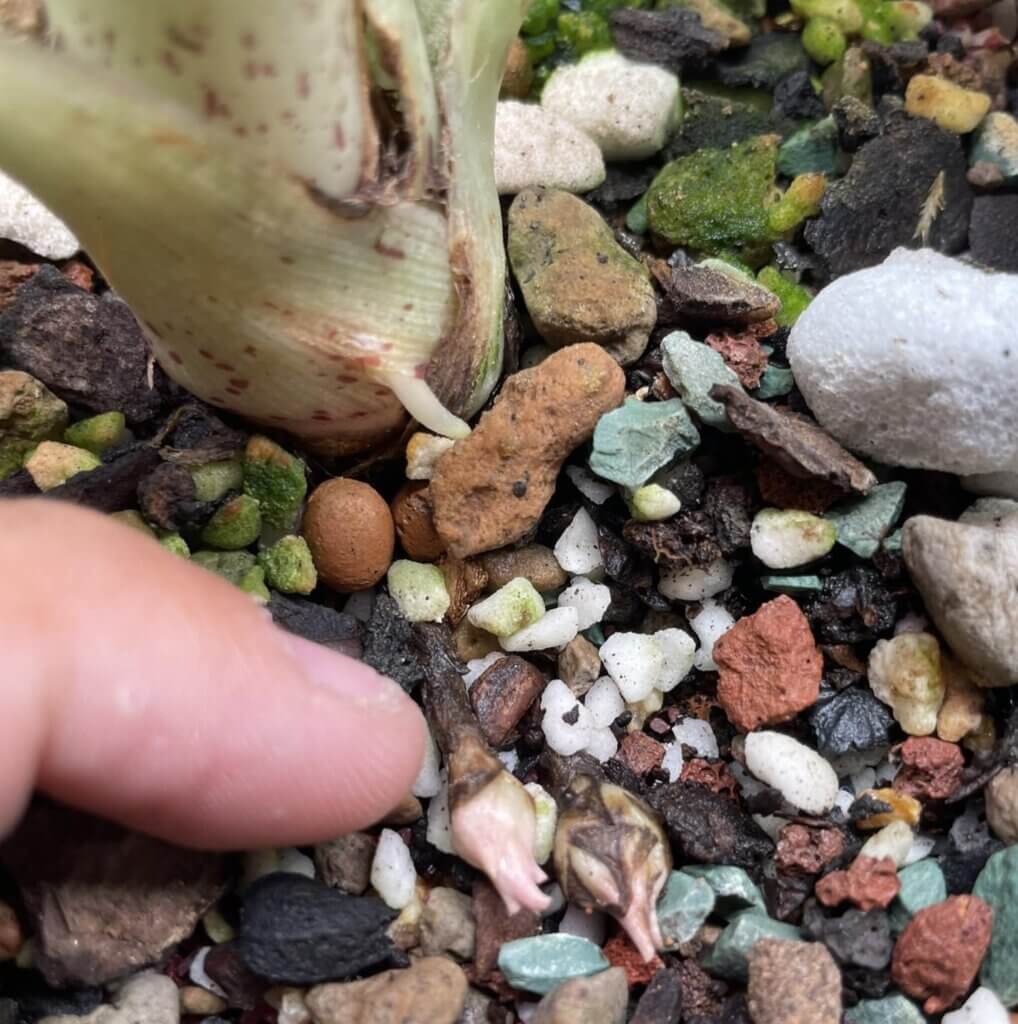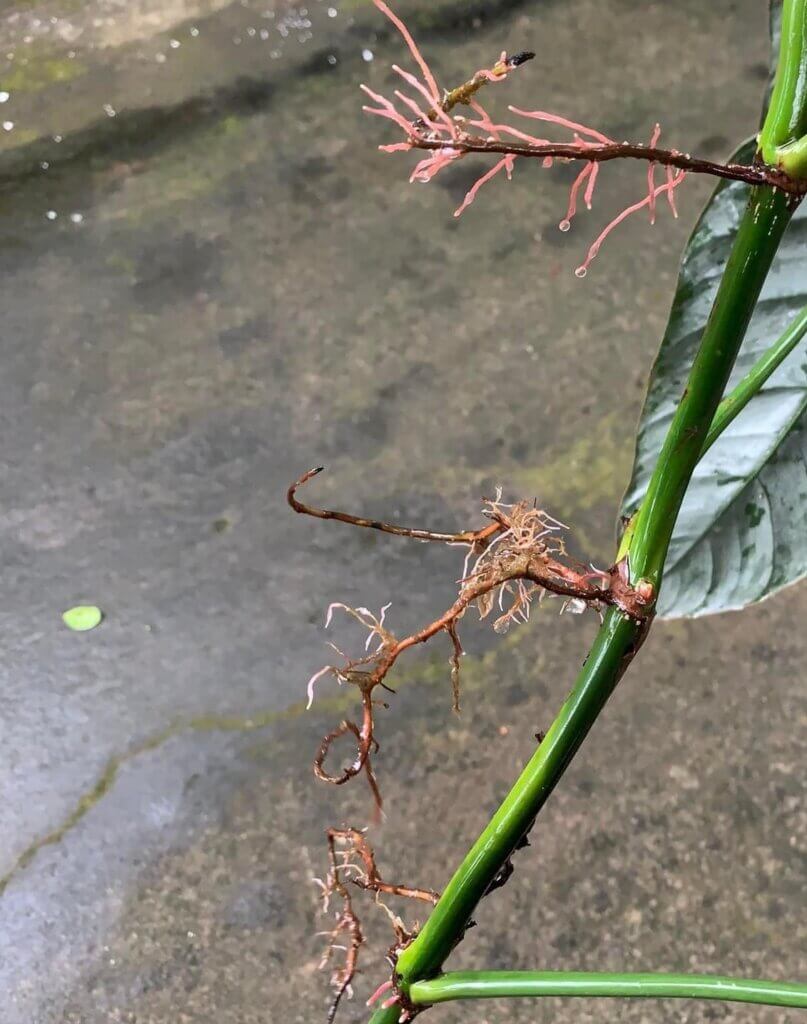For many houseplant enthusiasts, Lechuza Pon has become a popular alternative to traditional potting mediums. Its unique properties offer numerous benefits for plant growth and maintenance.
However, there are times when a plant might need or benefit from being transferred back to soil. Whether due to personal preference, plant requirements, or other reasons, moving from Lechuza Pon to soil can be a significant change for your plants.
This guide aims to provide a comprehensive walkthrough of this process, ensuring a smooth and successful transition for your green friends.

Summary
TL;DR: How to move plants from Lechuza Pon to Soil
- Some plants prefer natural soil conditions, especially those needing soil-based microbes. Soil can also simplify care routines or better suit a plant’s growth stage.
- Gather necessary tools and materials, and plan to transition during the plant’s growing season.
- Transition Steps:
- Carefully remove the plant from Lechuza Pon.
- Rinse roots to remove granules.
- Inspect and prune roots if needed.
- Prepare the new pot with a soil layer.
- Re-pot the plant, adding soil around roots.
- Water thoroughly after re-potting.
- Post-Transition Care: Adjust watering habits to suit soil needs and monitor plant health for stress or adjustment issues.
- Lechuza Pon vs. Organic Soil:
- Lechuza Pon offers better drainage, aeration, nutrient control, and is ideal for plants prone to root rot.
- Soil may need more frequent watering and maintenance but provides a range of natural nutrients.
Understanding Lechuza Pon
Before diving into the transition process, it’s important to understand what Lechuza Pon is and why it’s used. Lechuza Pon is a granulate made of pumice, zeolite, lava, and fertilizer.
This combination provides excellent drainage and air circulation, making it an ideal medium for plants that don’t thrive in traditional soil or for those looking to reduce watering frequency and improve root health.
You can also make your own DIY Pon too!
Read more: What is Lechuza Pon?
Reasons for Moving from Lechuza Pon to Soil
While Lechuza Pon offers advantages like better control over watering and nutrient delivery, there are reasons why you might consider moving your plants to soil:
- Natural Growth Conditions: Some plants prefer the natural environment that soil provides, especially those requiring specific soil-based microbes.
- Ease of Maintenance: While Lechuza Pon is low maintenance, soil can offer a more straightforward care routine for some plant owners.
- Plant’s Growth Stage: As plants mature, their needs can change, making soil a more suitable option for their continued growth.
Preparing for the Transition from Pon to Soil
Setting the Stage
Transitioning from Lechuza Pon to soil requires careful preparation:
- Gather Tools and Materials: You’ll need a new pot (or just use your old pot if you don’t have any root bound), possibly root stimulants or nutrients for the transition.
- Plan Your Approach: It’s advisable to undertake this transition during a plant’s growing season for better adaptation.
Step-by-Step Guide: Moving Houseplants from Lechuza Pon to Soil
The Transition Steps
- Carefully Remove the Plant: Gently take your plant out of its Lechuza Pon setup, being cautious with the root system.
- Clean the Roots: Rinse the roots to remove any remaining granules. This can be done under tepid water.
- Inspect and Prune the Roots: Look for any signs of rot, damage or disease and prune as needed.
- Prepare the Pot with Soil: Place a layer of soil at the bottom of the new pot.
- Re-potting: Position the plant in the center and add more soil around the roots, filling in gaps without overly compacting the medium.
- Initial Watering: Water the plant thoroughly to help it settle into its new home.
Post-Transition Care
- Adjust Watering Habits: Soil may retain water differently than Lechuza Pon, so be attentive to your plant’s watering needs.
- Monitor Plant Health: Keep an eye on your plant for any signs of stress or adjustment issues.
- Be Patient: Give your plant ample time to acclimate to its new soil environment.

Pon vs. Organic Soil
To make informed decisions for your houseplants, it’s helpful to understand the differences between Lechuza Pon and soil:
- Drainage and Aeration: Lechuza Pon excels in providing excellent drainage and air circulation, which can be crucial for certain plants, while soil may require additional amendments to achieve similar drainage.
- Nutrient Control: With Lechuza Pon, you have precise control over nutrient levels, which can be beneficial for feeding specific plants. Soil, depending on its composition, can offer a range of nutrients naturally.
- Maintenance: Lechuza Pon generally requires less frequent watering and can be more forgiving in terms of overwatering, whereas soil might need more regular attention.
- Root Environment: The unique structure of Lechuza Pon promotes healthy root growth, especially for plants prone to root rot in soil.
- Sustainability: Lechuza Pon is durable and long-lasting, whereas the sustainability of soil depends on its source and composition.
Conclusion
Moving your houseplants from Lechuza Pon to soil can be a rewarding process for both novice and experienced plant enthusiasts. Understanding the specific needs of your plants and the characteristics of both mediums will help ensure a successful transition.
Whether you’re returning to soil for its natural benefits or to meet the changing needs of your plants, the key is to approach the transition with care and patience.
Every plant is unique, and finding the right environment for your green companions is a journey worth embarking on.


